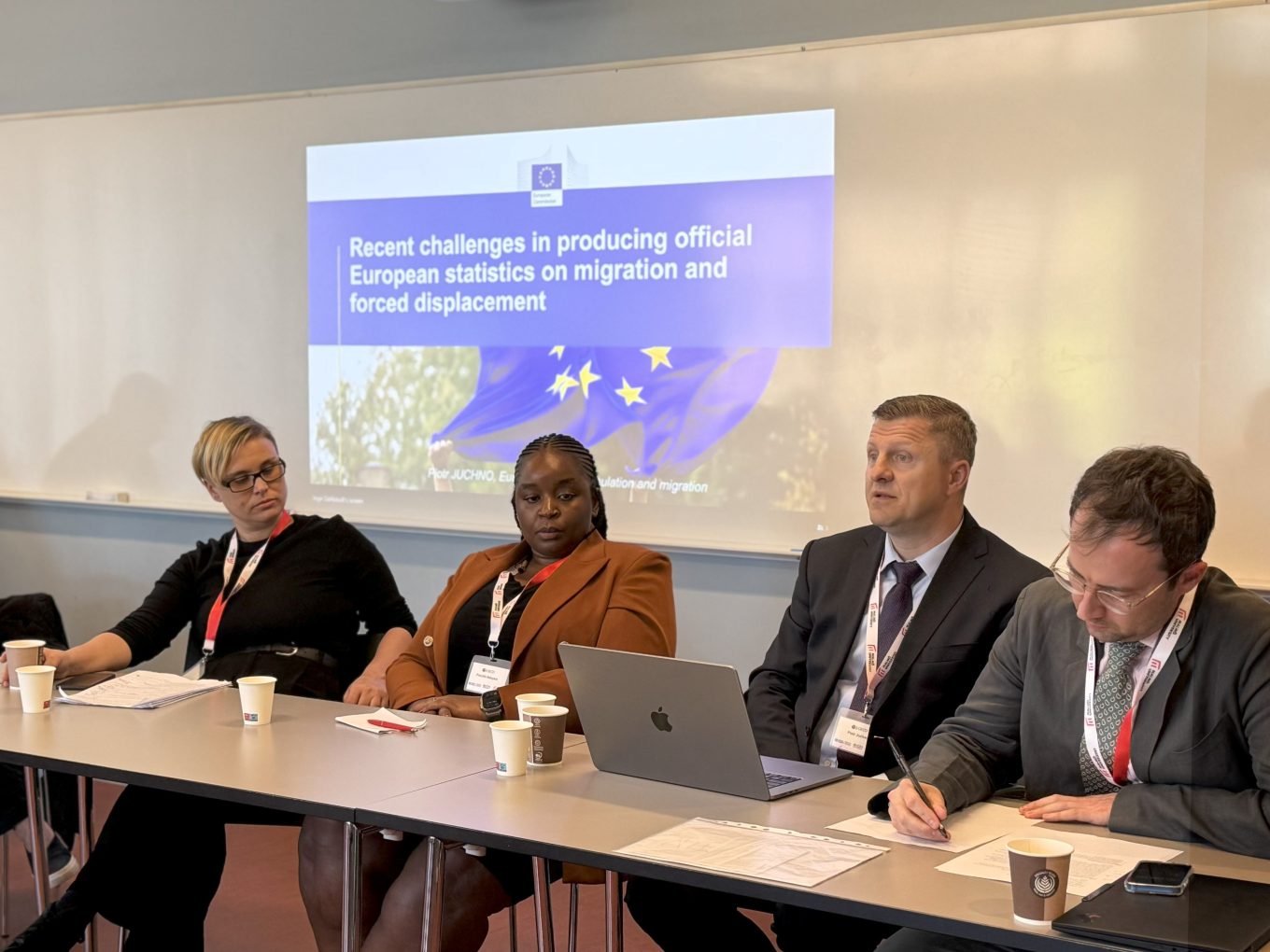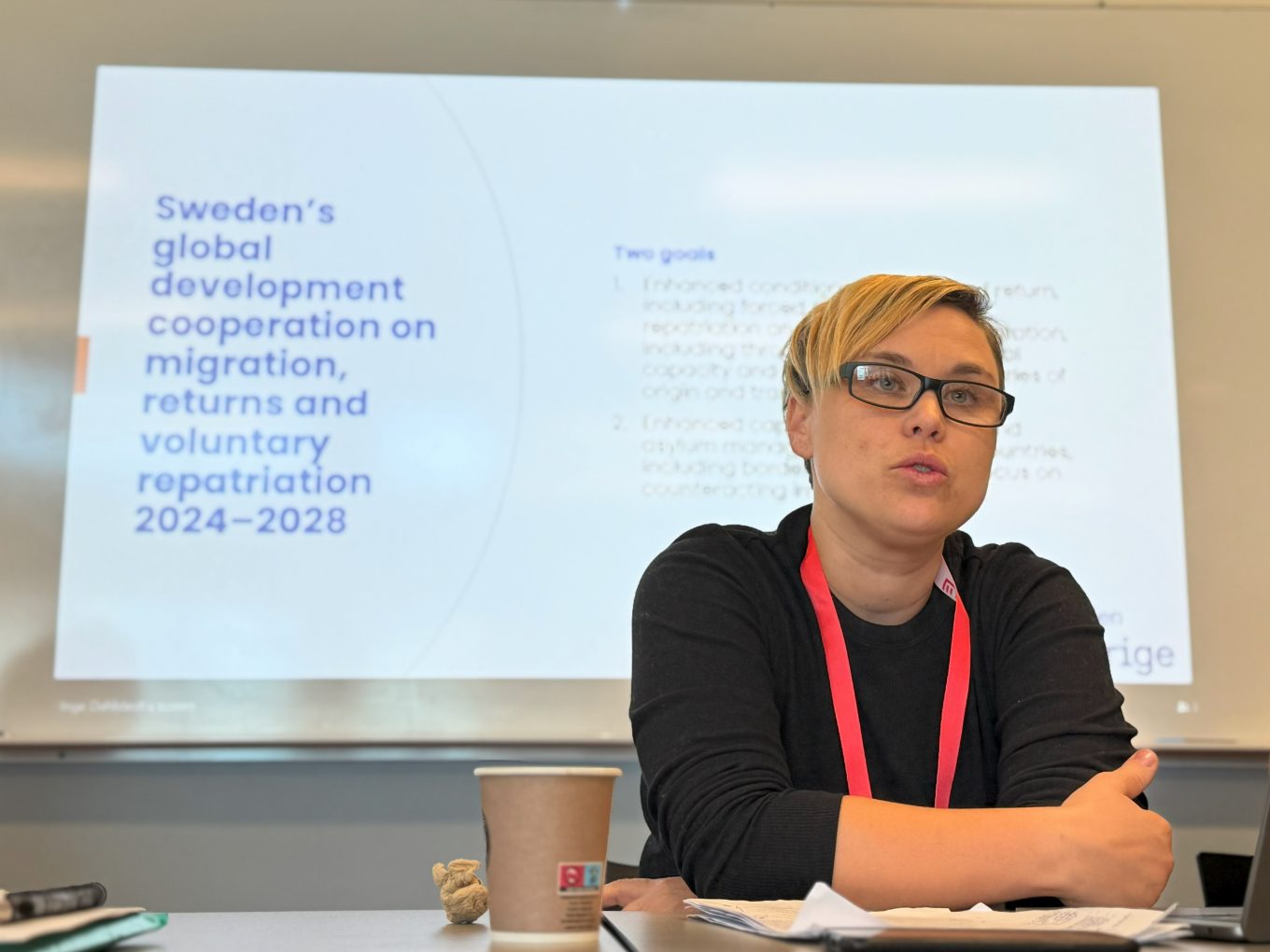16th June 2025
“Mixed movements” of migrants and forcibly displaced persons present unique challenges for governments and organisations trying to manage statistics safely while protecting rights. At the 4th International Forum on Migration Statistics, a session convened by EGRISS and Eurostat brought together specialists to discuss how regional cooperation and aligned statistical frameworks can advance the availability and harmonization of data on both groups. The discussion highlighted the growing complexity of global human mobility – with 123.2 million people forcibly displaced worldwide by the end of 2024 and 281 million living outside their countries of birth as of 2020 –, and experts from different regions shared best practices and challenges.
Piotr Juchno, Team Leader of Asylum and Managed Migration Statistics at Eurostat discussed the European statistical challenges, while Priscilla Ndayara, Senior Migration Statistician at the East African Community (EAC), outlined how Regional Economic Communities serve as key actors in developing migration statistics across Africa. Ismail Lubbad, Team Leader of the Demographic and Social Statistics Team at UNESCWA presented recent efforts to enhance cooperation in Arab States, and Agnes Geijer-Farah, Program Manager for Migration & Development at the Swedish International Development Cooperation Agency (SIDA), discussed international development cooperation objectives.
Natalia Baal, Head of the EGRISS Secretariat, presented on synergies and tensions between existing statistical frameworks on migration, displacement, and statelessness and moderation was provided by Harry Cook, Regional Specialist (Data and Research) from the IOM. Overall, panellists stressed that more work remains to help National Statistical Systems effectively navigate these frameworks, with regional platforms and peer-to-peer exchanges emerging as crucial mechanisms for building capacity and improving technical cooperation across borders.

Piotr Juchno outlined the evolution of migration data collection in the European Union, detailing how rising data demands led to the revisions of the legal frameworks in recent years. A key challenge identified centres on duplication of efforts between Eurostat and the European Union Agency for Asylum (EUAA) that collect data from the same national counterparts, creating a substantial reporting burden and potentially generating “two different figures for the same phenomenon”. The issue was compounded by other EU bodies collecting data, including the Border Guards Agency (Frontex) and the Fundamental Rights Agency (FRA). Piotr announced a major breakthrough triggered by the EU Pact on Migration and Asylum: “From the next year, EUAA will become an entry point for the statistics on international protection for forced displacement for all the European countries while agreeing on the model how the operational data will become official statistics because Eurostat will then collect this information from the Asylum Agency”.
Priscilla Ndayara outlined the migration landscape across the EAC’s eight partner countries (Burundi, Congo, Kenya, Rwanda, Somalia, South Sudan, Uganda, and Tanzania), significant refugee-hosting nations and place of origin for displaced populations. To organise coordination between diverse data producers across entities and administrative systems, the EAC established its Regional Technical Working Group on Migration Statistics in June 2021, operating under the overall standards and recommendations available at the global level, the African Statistical System (AfSS), and the African Union’s Strategy for the Harmonization of Statistics in Africa (SASHA2). She explained EAC’s work to developing partner state-led “regional guidelines for the compilation of migration statistics” as a cornerstone strategy for harmonizing data collection practices. Through their experience, Priscilla identified critical lessons learned: the importance of having an overarching coordination body, the necessity of harmonization from the beginning of the data collection cycle, and the value of institutionalized reporting mechanisms coupled with targeted capacity building initiatives.

Agnes Geijer-Farah emphasized that improved data is key for implementing Sweden’s Global Development Cooperation strategy on Migration Returns and Voluntary Repatriation. Globally, SIDA’s strategic partnerships have been fundamental for this, particularly their interagency project with Statistics Sweden to enhance the capacity of STATAFRIC, RECs, and their member states. Agnes detailed how this partnership addresses specific data challenges through five components: concept and methods, dissemination and publication, coordination, and a newly added forced displacement component covering refugees, IDPs, and stateless people. She highlighted critical next steps including enhancing stock and flow data collection systems, addressing challenges in categorizing people on the move to determine protection needs, and promoting strategic prioritisation in data initiatives aligned with housing policy needs, labour mobility, climate-induced displacement, and urban migration.
Joining the speakers remotely, Ismail Lubbad dove into the data collection panorama across Western Asia. With one-third of global refugees originating from Arab states, and 15 million refugees hosted in them, this ecosystem poses challenges in systematic data capture. Ismail highlighted critical obstacles that undermine data reliability and comparability: absence of standardized definitions, systematic exclusion of migrants and refugees from census and household surveys, fragmentation of data sources, and limited statistical capacity. Despite constraints, Ismail’s acknowledged opportunities through successful country examples and emerging regional cooperation, such as Morocco’s national migration strategy, and recent census in Iraq and Djibouti. The regional workshop in Cairo with EGRISS, League of Arab States, UNHCR, and IOM was also highlighted as a coordination opportunity.

Natalia Baal emphasized the critical need for better comprehensive and aligned statistical frameworks to address the data challenges surrounding migration and displacement. She highlighted that despite recent advancements, such as the revision of the Recommendations on Statistics of International Migration and Temporary Mobility, challenges remain and span across conceptual, political, operational dimensions. Through the Global Annual Inclusion (GAIN) Survey, Natalia demonstrated that national use of IRRS, IRIS, and IROSS is growing and critically, suggesting that well-resourced and effective regional coordination platforms lead to improved national-level uptake: “where there’s regional cooperation, implementation is better”. She concluded that while “progress towards good quality national statistics on refugees and IDPs is tangible” across regions, better alignment with migration statistics is essential to scale up beyond ad hoc efforts into systematic trends.

